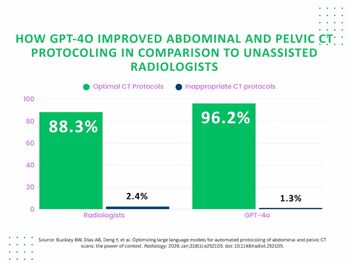
Lower Contrast Dose Works for MDCT Angiography
Radiologists can boost patient safety without significantly affecting the quality of the images by cutting the dose of contrast media in coronary CT angiography, according to a new study in the American Journal of Roentgenology.
Radiologists can boost patient safety without significantly affecting the quality of the images by cutting the dose of contrast media in coronary CT angiography, according to
An analysis of 108 CT angiography studies done using a 320-detector-row CT scanner found that a contrast media protocol based on 60 milliliters of iopamidol “had sufficient enhancement in more than 96 percent of coronary segments,” said Frank Rybicki, MD, of Brigham and Women’s Hospital in Boston, and one of the authors of the study.
Many centers use a higher iodine load, one comparable to 80 milliliters of
All patients were imaged with a standardized protocol: iopamidol 370 followed by 40 mL of saline, both administered at a rate of 6 mL/s. Two radiologists assessed image quality throughout the coronary arteries. While those receiving the equivalent of 80 milliliters of iopamidol had slightly better image quality, the extra contrast, Rybicki said, “means unnecessary costs and increased risk of
The analysis of patients with body mass indexes greater than 30 found that 92 percent of coronary segments had sufficient enhancement, which Rybicki said supports the general use of 60 milliliters of iopamidol for CT angiography done on 320 detector row CT scanners.
Newsletter
Stay at the forefront of radiology with the Diagnostic Imaging newsletter, delivering the latest news, clinical insights, and imaging advancements for today’s radiologists.




























